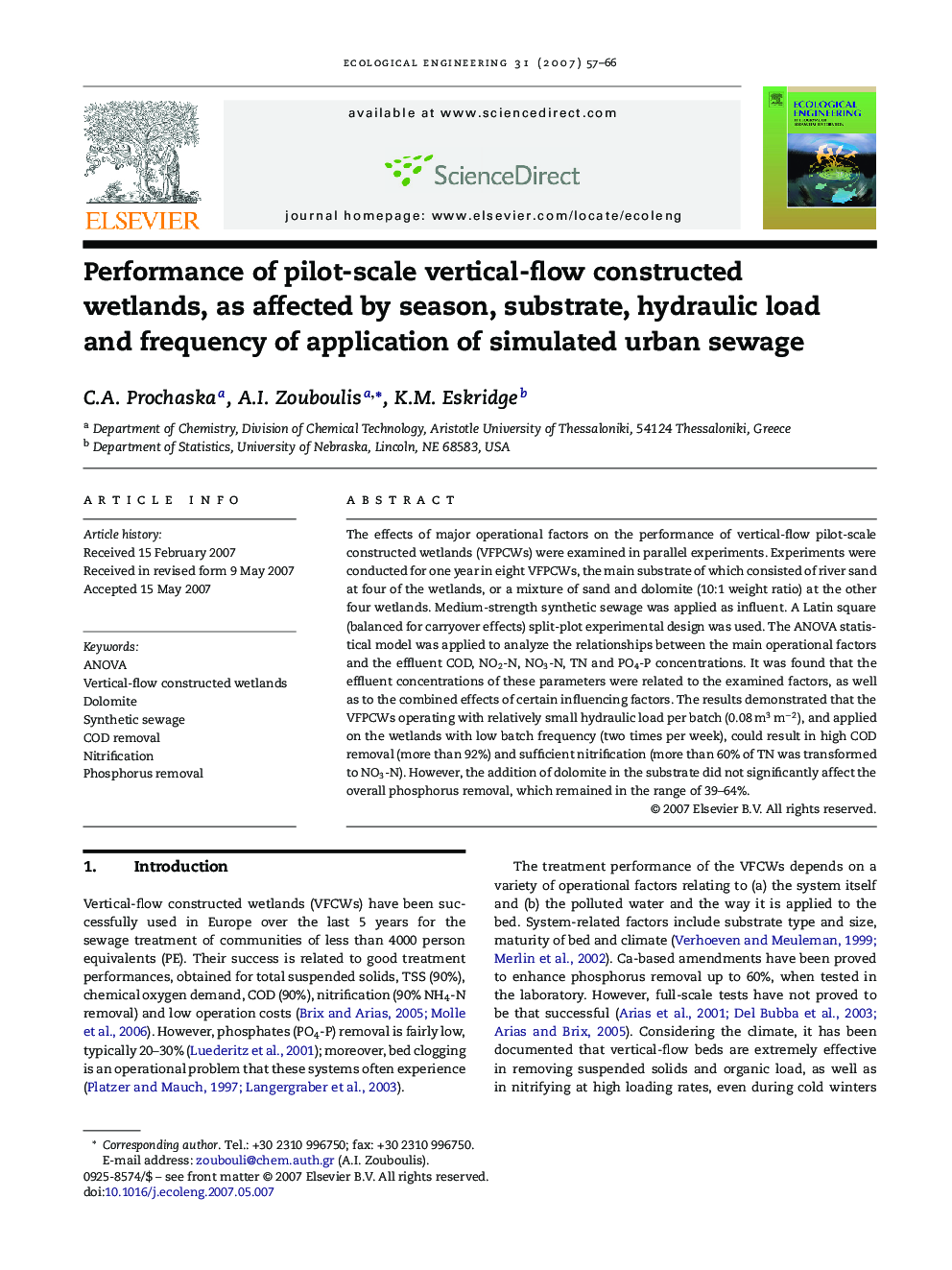| Article ID | Journal | Published Year | Pages | File Type |
|---|---|---|---|---|
| 4391068 | Ecological Engineering | 2007 | 10 Pages |
The effects of major operational factors on the performance of vertical-flow pilot-scale constructed wetlands (VFPCWs) were examined in parallel experiments. Experiments were conducted for one year in eight VFPCWs, the main substrate of which consisted of river sand at four of the wetlands, or a mixture of sand and dolomite (10:1 weight ratio) at the other four wetlands. Medium-strength synthetic sewage was applied as influent. A Latin square (balanced for carryover effects) split-plot experimental design was used. The ANOVA statistical model was applied to analyze the relationships between the main operational factors and the effluent COD, NO2-N, NO3-N, TN and PO4-P concentrations. It was found that the effluent concentrations of these parameters were related to the examined factors, as well as to the combined effects of certain influencing factors. The results demonstrated that the VFPCWs operating with relatively small hydraulic load per batch (0.08 m3 m−2), and applied on the wetlands with low batch frequency (two times per week), could result in high COD removal (more than 92%) and sufficient nitrification (more than 60% of TN was transformed to NO3-N). However, the addition of dolomite in the substrate did not significantly affect the overall phosphorus removal, which remained in the range of 39–64%.
